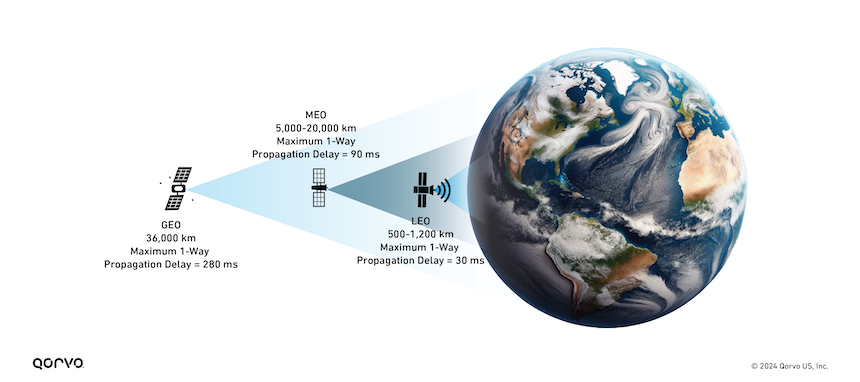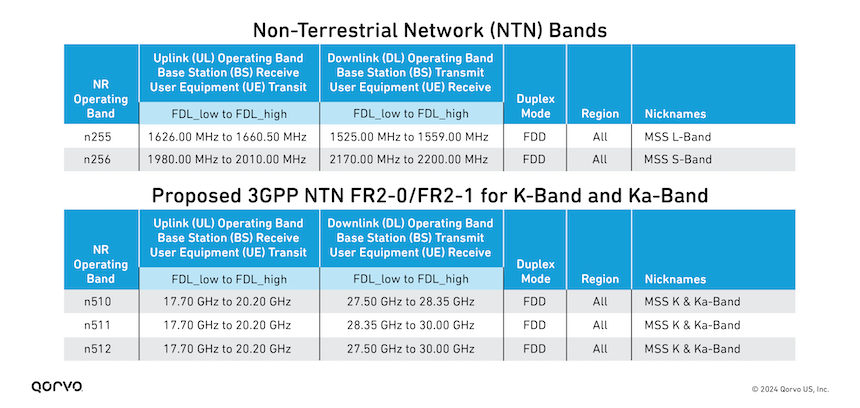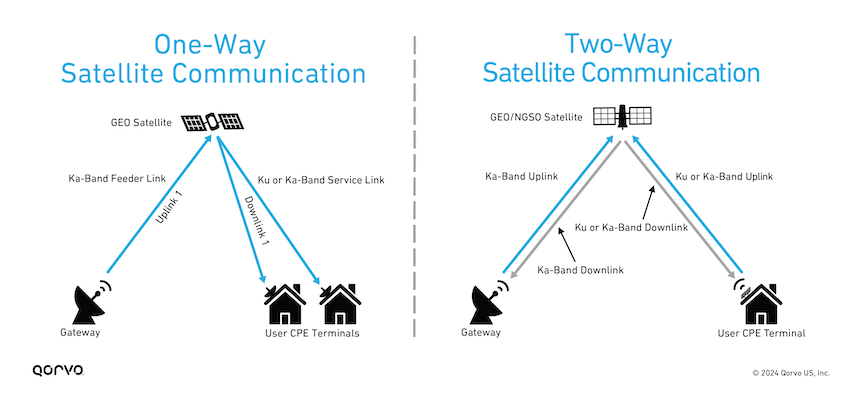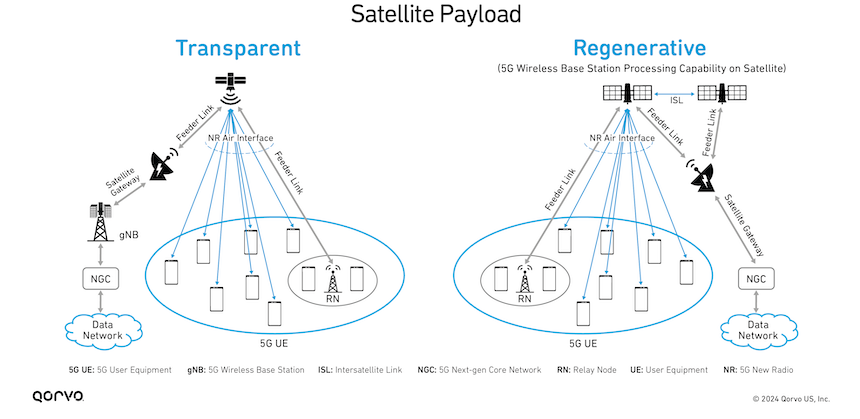Advancing Communication: The Role of LEO Satellites in the Wireless Expansion
August 26, 2024
Introduction
In Part 1, How Modern LEO Satellite Technologies are Changing the Space Race, we explored the many aspects of the satellite marketplace and began to touch upon the impact it’s having on 5G New Radio (NR) cellular and IoT networks. In this article we dig a bit more into this convergence of satellite mesh with non-terrestrial networks (NTNs) and how they are changing the communication landscape of tomorrow.
NTN satellites function as relays to extend wireless coverage and capacity of terrestrial networks. These networks provide communication services for emergencies, disasters and other services such as IoT network devices. Moreover, companies are offering agreements to add satellite connectivity to the latest high-end smartphones. Enabling global two-way emergency messaging, low-cost internet services to remote locations, remote texting and other phone-based communications, all powered by low Earth orbit (LEO) satellite networks.
Moreover, the 3GPP's Release 17 adds new 5G satellite network uses, covering geostationary orbit (GEO), medium earth orbit (MEO) and LEO satellite technologies. The 5G NTN NR satellite network includes two communication links – one between the satellite and users and the other between the satellite and the ground station connected to the data network on Earth. It will provide both NTN-IoT and 5G NR communications – linking smartphones and other 5G enabled devices to the NTN service network.
Advancements in 5G NR NTN and Satellite Technology
As shown in Figure 1 below, GEO satellites, positioned at 35,000 km above the Earth, have a latency of 280 milliseconds (ms), whereas LEO satellites, orbiting at altitudes between 500 to 1,200 km, can reduce latency to just 6 to 30 ms. Therefore, the maximum one-way propagation delays from user equipment (UE) to LEO satellites have a much shorter delay than their MEO and GEO counterparts.

The 5G NR NTN architecture, incorporating satellite technology, promises global cellular wireless connectivity. The 3GPP Release 17 focuses on enhancing 5G-NTN and IoT-NTN services worldwide, it also introduces low latency direct-to-cellular services, improving speeds to tens of Mbps in the sub-6 GHz band.
Additionally, Release 18 aims to improve coverage and mobility by using frequencies above 10GHz, specifically the Ka and Ku bands. This allows speeds of hundreds of Mbps, benefiting smaller active electronically scanned array (AESA) antennas, such as those used by SpaceX's Starlink. These advancements boost speeds, support disaster recovery efforts and extend coverage to remote areas previously unreachable by traditional networks.
As shown in Table 1 below, the evolution of 5G NTN under 3GPP standards involves expanding the spectrum to include the L, S, K and Ka bands, enhancing uplink coverage, and supporting mobility services. Release 18 specifically targets the introduction of three new NTN bands above 10 GHz (n510, n511 and n512) to further refine the 5G NTN design for improved performance and broader accessibility.

Another key objective of NTN networks is to enhance the efficiency of the limited radio frequency spectrum, which often becomes congested. Recent technology studies are finding better ways to manage this congestion, like using Time Division Duplexing (TDD) for space networks, a change from the usual method that assigns different paths for sending and receiving signals. The use of TDD bands as shown in Table 2, helps mobile carriers free up more space on the busy under-6GHz spectrum. These improvements are pushing satellite technology forward, making it smarter and more in line with ground-based networks.

Comparison of One-Way and Two-Way Satellite Communications
Satellite communications are categorized into one-way and two-way systems. One-way communication involves signals being transmitted from the satellite to the ground, utilized in services such as GPS, satellite TV and radio. In contrast, two-way communication facilitates interactive signal exchange between satellites and ground stations, supporting internet services and phone calls. Figure 2 illustrates the differences between one-way and two-way communications involving Earth stations and a satellite.
As shown, one-way communications (left) like direct broadcast satellite (DBS) services, traditionally rely on GEO satellites. GEO satellites match the planet’s rotation and only orbit Earth’s equator. From the ground perspective GEO satellites appear in a fixed position in the sky. GEO satellites are a type of geosynchronous orbit (GSO), and both are used in telecommunications and Earth observation.
Non-geostationary orbit (NGSO) refers to a type of orbit used by satellites where it is not stationary relative to the surface of the Earth. NGSOs orbit the Earth at a lower altitude than GEO satellites and complete an orbit in a much shorter time. NGSOs constantly move across the sky and can provide better coverage for mobile satellite services and improve global connectivity. There are several types of NGSO orbits, including LEO, MEO and highly elliptical orbit (HEO) – with LEO being the closest to Earth.

Two-way LEO satellite architectures further enhance the overall satellite communications. These two-way satellite communications advance beyond the old one-way "bent-pipe" approach, incorporating technologies like AESA antennas. The bent-pipe architecture behaves like a repeater, while the two-way architecture moves beyond this one-way communications style. These advanced systems are crucial for enhancing communication between ground and satellite.
NTN Transparent and Regenerative Architectures
The new generation of ground-station systems is moving towards flexible and interconnected infrastructures with smaller flat panel user terminals, like cellular networks. To integrate satellite access networks into 5G, 3GPP TR38.821 introduced two types of satellite-based NG-RAN architectures: transparent and regenerative.
As shown in Figure 3 (left), the transparent payload architecture, the 3GPP 5G NR base station (gNB) is on the Earth, while the satellite plays the role of the bent-pipe repeater. In transparent payload communications, RF filtering, frequency conversion and amplification are performed on the satellite.
In the regenerative payload architecture shown in Figure 3 (right), full gNB or part of gNB is implemented on the satellite. Therefore, in regenerative payload communications the RF filtering, frequency conversion and amplification, demodulation, coding/decoding, switching or routing and modulation are done on the satellite. This is like having all or part of the gNB traditional ground base cell site function on board the satellite. These regenerative system architectures used for LEO satellites have many advantages over the traditional bent-pipe transponders. This is the architecture of the future as the current LEO constellations have their own proprietary waveforms and on-board processing systems.

The Entrance of AESA and Beamforming
Traditional parabolic (dish type) antenna limitations are unable to keep up with current requirements, leading a transition to electronically steered antennas such as AESA or phased-array types. AESA antennas can change the direction of their signal electronically, without needing to move physically, offering a big improvement over the mechanically steered antennas’ agility. Moreover, AESA can create and send out its signals, using beamforming techniques for fast and accurate beamsteering adjustments. This enables connectivity to satellites in any orbit with fast handoff between satellites.

As shown in the above Figure 4, user CPE terminals are the direct link between the user and the satellite. These units are lower cost, easy to set up and can be stationary or mobile (i.e., mobile satcom, maritime, etc.) They use AESA antennas to integrate various technologies into a more compact and lightweight design. This includes beamforming technology for agile tracking and steering, and they also utilize readily available commercial off-the-shelf (COTS) components. Moreover, they support faster data transmission methods.
A Final Word
In this article, we emphasized the integration of satellite networks with 5G NR NTNs, highlighting the use of LEO satellites. This deployment amplifies terrestrial 5G coverage and supports services ranging from emergency communications to IoT applications. Highlighting the advancements in 3GPP's Release 17, it notes the extension of satellite connectivity to smartphones, offering global messaging and broadband enhancements. We also explored the shift from traditional "bent-pipe" models to advanced two-way communication systems, incorporating commercial technologies for improved efficiency. With the use of AESA and beamforming technologies, there's a big improvement in how fast data can be sent and how efficiently the available frequencies are used. This advancement is pushing global communication forward by making internet connections faster, reaching wider areas, and providing more dependable service, even in remote locations.
In Part 3 of this series, we will dive more into this AESA beamforming technology and how it is changing and catapulting space satellite networks into the cellular market area.
For more on this topic and solutions, we encourage you to view these collateral pieces – our webinar Key Components for LEO Satellite Systems, our sponsored eBook RF Technology Trends for LEO Satellite Systems, our blog on Ka-Band Satcom Trends and Power Amplification Challenges, our webpage Active Antenna Systems, and our Beamforming webpage. Additionally, you can find more interesting collateral on this subject by visiting our Qorvo Design Hub for a rich assortment of videos, technical articles, white papers, tools and more.
For more information on this and other Qorvo 5G and 6G base station design solutions, please visit Qorvo.com or reach out to Technical Support.
Have another topic that you would like Qorvo experts to cover? Email your suggestions to the Qorvo Blog team and it could be featured in an upcoming post. Please include your contact information in the body of the email.
